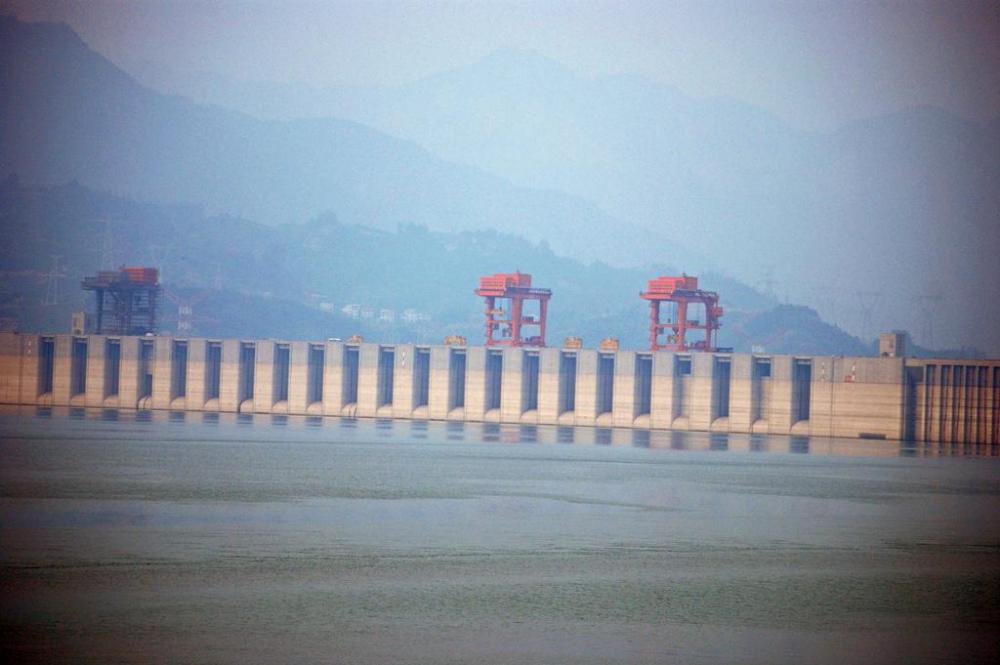At AllThingsNature, we're committed to delivering accurate, trustworthy information. Our expert-authored content is rigorously fact-checked and sourced from credible authorities. Discover how we uphold the highest standards in providing you with reliable knowledge.
What Is a Baiji?
A baiji, also known as the Yangtze River dolphin, is a recently decimated species of freshwater porpoise found only in the Yangtze River in China. These pale, long-beaked cetaceans were nearly blind and relied heavily on their sonar to find food and navigate the river. Due to large-scale dredging and damming as well as overfishing of their food source and the mammals themselves, the baiji has been declared functionally extinct. A survey in December 2006 found no live specimens.
Baijis were one of four known species of freshwater dolphins. An adult weighed 300-510 pounds (135-230 kg) and were around eight feet (2.5 m) in length, and had a long beak and a white underbelly. The baiji fed mostly on small freshwater fish and was found originally in a 1,000-mile (1609 km) stretch of the Yangtze River, including tributaries and the Dongting and Poyang Lakes.

The baiji lived in groups of three or four and preferred quiet eddies near both sandbars and meanders and deep waters in the river. Only one young was born at a time, and gestation lasted 10-11 months. The animal probably had a lifespan of around 25 years, and due to the two-year gap between births did not reproduce quickly. Observed communication consisted of whistles and clicks, similar to other dolphin species.

During the Great Leap Forward from 1958 to 1961, traditional veneration of the baiji as the “Goddess of the Yangtze” ended, and they were hunted for food and traditional medicine. Environmental changes, including the Gezhouba Dam Project, dredging the river, and pollution by industrial waste, severely damaged the dolphin’s habitat and that of its prey. Electrofishing threatened it and reduced its food supply. Noise pollution caused by boats confused its sonar, and collisions may have injured many of the animals.

In the 1970s, China became aware of the plight of the baiji and created protection organizations, but none were able to keep an animal in captivity for long. During November and December of 2006, thirty researchers undertook a six-week, 2,000 mile (3219 km) survey of the animal’s habitat, but turned up no live specimens. The baiji were then declared functionally extinct.

Later in August 2007, a sighting of an animal later confirmed as a baiji took place in eastern China's Anhui Province and was captured on video. There is little hope of a breeding population left there, however. The finless dolphin, another native cetacean, is now the target of an aggressive conservation effort, and calves have been successfully bred and born in captivity.
Frequently Asked Questions
What is a Baiji?
The baiji, also known as the Yangtze River dolphin, was a freshwater dolphin endemic to the Yangtze River in China. It was known for its slender body, long beak, and low dorsal fin. Unfortunately, the baiji is now considered functionally extinct, with the last confirmed sighting in 2002.
Why is the Baiji considered functionally extinct?
The baiji is considered functionally extinct due to human activities that have severely impacted its habitat. These include industrial pollution, overfishing, and heavy river traffic on the Yangtze River, which not only degraded the water quality but also led to accidental deaths from collisions with boats. Despite conservation efforts, no baiji have been spotted since 2006.
How did the Baiji navigate and hunt in the murky waters of the Yangtze River?
The baiji was well-adapted to the turbid waters of the Yangtze River through its use of echolocation. This biological sonar allowed the dolphin to navigate and locate prey by emitting sound waves and listening for their echoes, a vital adaptation for survival in the river's silt-laden waters.
What did the Baiji eat?
The baiji's diet primarily consisted of freshwater fish. Its long, narrow beak was perfectly adapted for catching fish in the Yangtze River. The dolphin would use its echolocation to detect and capture its prey, often hunting in the river's main channels where fish were abundant.
Were there any conservation efforts to save the Baiji?
Yes, there were conservation efforts to save the baiji, including the establishment of reserves and bans on fishing with nets that could accidentally capture the dolphins. However, these measures were implemented too late, and the baiji population continued to decline due to persistent environmental degradation and insufficient enforcement of conservation policies.
What can we learn from the Baiji's extinction?
The baiji's extinction serves as a stark reminder of the impact human activities can have on biodiversity. It highlights the urgent need for proactive conservation measures, strict enforcement of environmental regulations, and sustainable development practices to protect other endangered species and ecosystems from a similar fate.
AS FEATURED ON:
AS FEATURED ON:














Discuss this Article
Post your comments